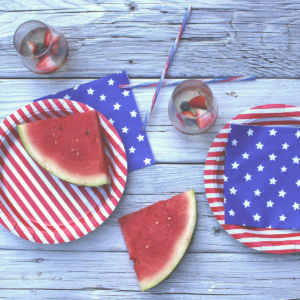Now You See It

We are visual beings through and through, which means that this is the most important factor to consider in any marketing strategy. Now, marketers from all over are recognizing just how vital implementing imagery, video, and other visual elements is into their campaigns. In fact, 74% of social media marketers use visual assets in their social media campaign, and 46% say that photography is critical in their marketing and storytelling strategies. Since social outlets like Facebook, Instagram, and Snapchat are currently what’s dominating the advertising-sphere, it’s evident that the most effective way to promote a brand is by allowing your audience to see just exactly what that brand is.
Did you know that when people hear information, they’re only likely to remember 10% of that information three days later, but if an image is paired with that same information, people retain 65% more? This stat is simply too significant to ignore, and marketers have taken notice. 60.8% of marketers stated that the use of visual content was absolutely necessary to their marketing strategy, while the use of visual content in articles published increased by a whopping 130% last year. This makes sense when the brain processes visual information 60,000 times faster than text!
With these stats in mind, companies stepped up their game to make their strategies as visually friendly as possible, and this past year, changes occurred on mostly every social outlet. Here’s what the use of visuals might mean for our favorite social media platforms:
Facebook: Still the ruler of the social world, Facebook originated as a website dominantly revolving around posting pictures. Today, 55% of marketers still choose Facebook as their most important social media outlet. Pictures still matter as much on this site as they ever did – posts with images get 2.3 times the engagement than posts without images. With their introduction of broadcasting through Facebook Live, they are only becoming more of a stand out – which may be the smartest marketing ploy yet, because this year, video content will represent 74% of internet traffic.
Twitter: Although Twitter might not come to mind right away when you think about visuals, it’s becoming more and more effective to post them on this platform. Tweets with images get 150% more retweets than those without images, and Twitter prepared for this a few months ago by allowing users to still add a pictures in without affecting the character limit.
Instagram: What would Instagram be without pictures?! And being a platform with over 500 million users, Instagram is crucial for any marketing company at this point, especially trying to reach an audience of a younger set – 57% of teens are currently using this app. Keep in mind that photos showing faces get 30% more likes than those that don’t.
Snapchat: An outlet built for taking and sending photos, it’s no surprise that visuals are the most important component of Snapchat. In fact, Snapchat users send 9,000 photos per second! This is another millennial-driven that is important to consider since 41% of teens use Snapchat, and now with the introduction of geo-tags, you can see exactly where your pictures are being taken.
Since 93% of all communication is nonverbal, when you add in powerful content + powerful imagery, you make it hard not to be noticed. What we see has a huge effect on what we do, think, and feel, and what better way to express what we see than sharing it with others so that they can see it too.
Check out some of our favorite images:



Categories Inbound, Visual Content